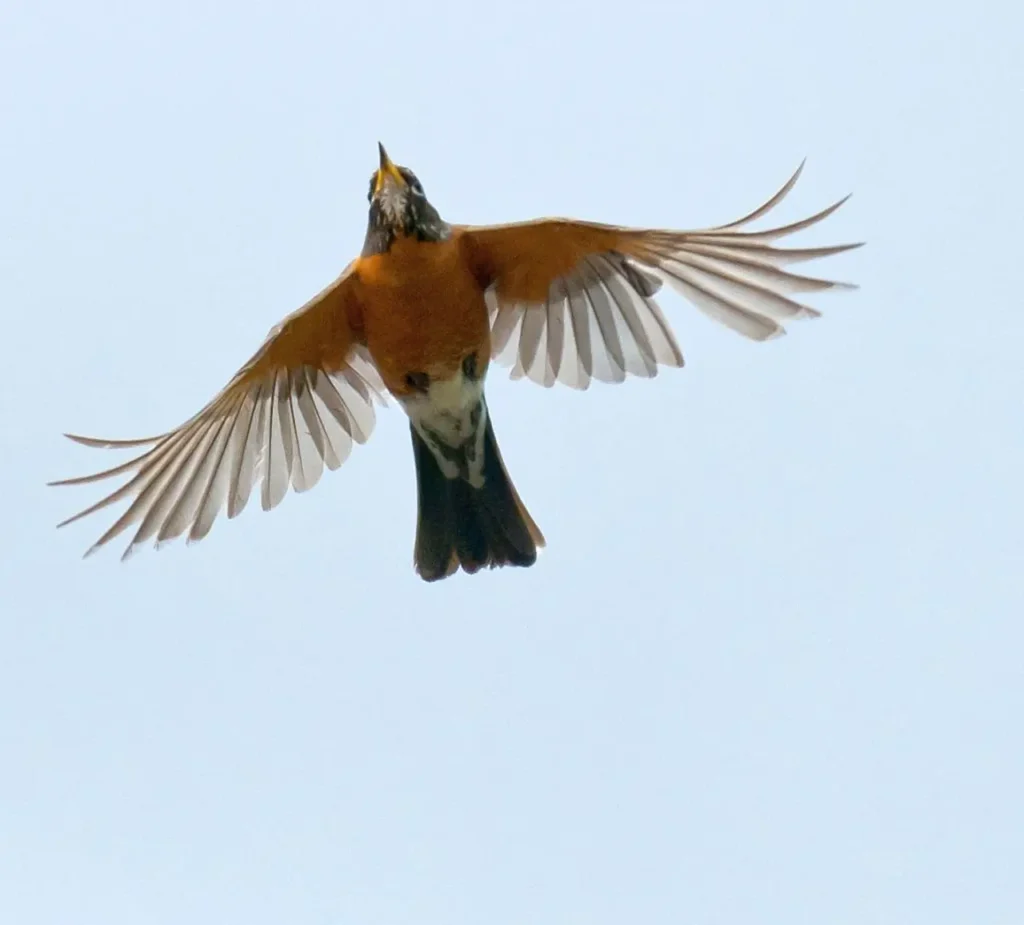As winter’s grasp gradually loosens its hold and gives way to the tender embrace of spring, a familiar and harmonious song resonates across North American landscapes—the American Robin (*Turdus migratorius*). With its resplendent orange-red breast and melodious serenade, the robin has become an emblematic herald of shifting seasons. In this narrative, we venture into the captivating realm of the American Robin, unveiling its appearance, behaviors, symbolism, and its esteemed role as a cherished and iconic avian figure of North America.
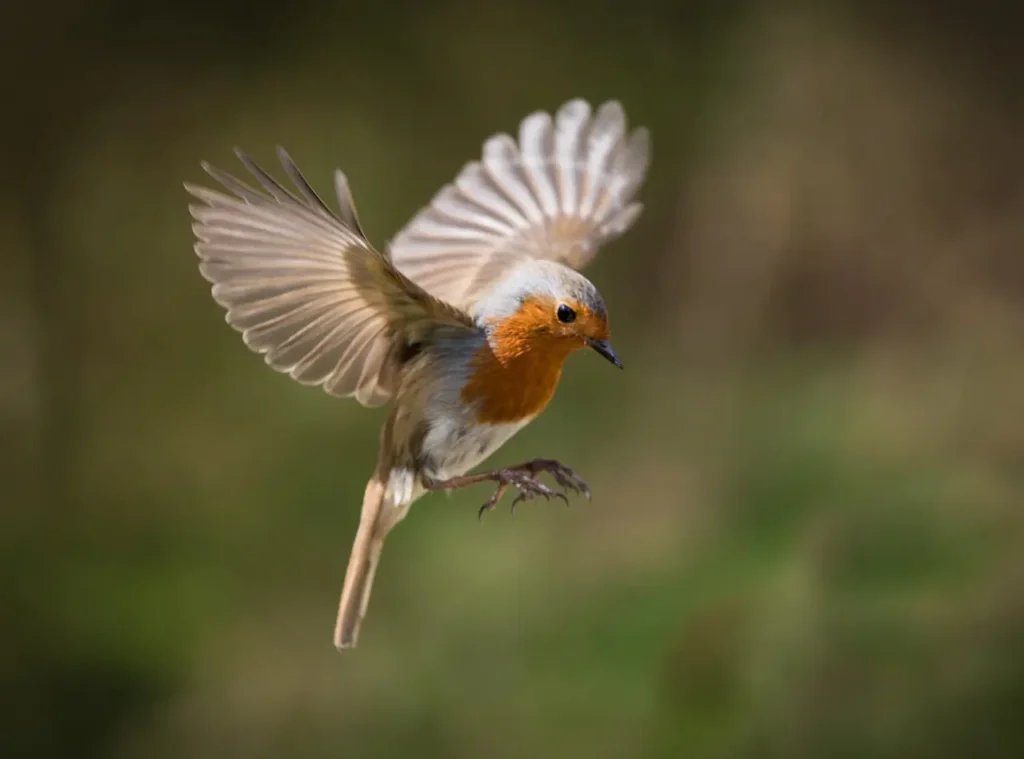
Distinguished by its vibrant orange-red breast, soft grayish-brown back, and a telltale white eye-ring, the American Robin is an instantly recognizable sight. Possessing an upright stance and a sleek physique, the robin exudes an aura of vigilance and purpose, whether it is gracefully hopping across lawns, diligently foraging for sustenance, or sharing its melodious refrains.
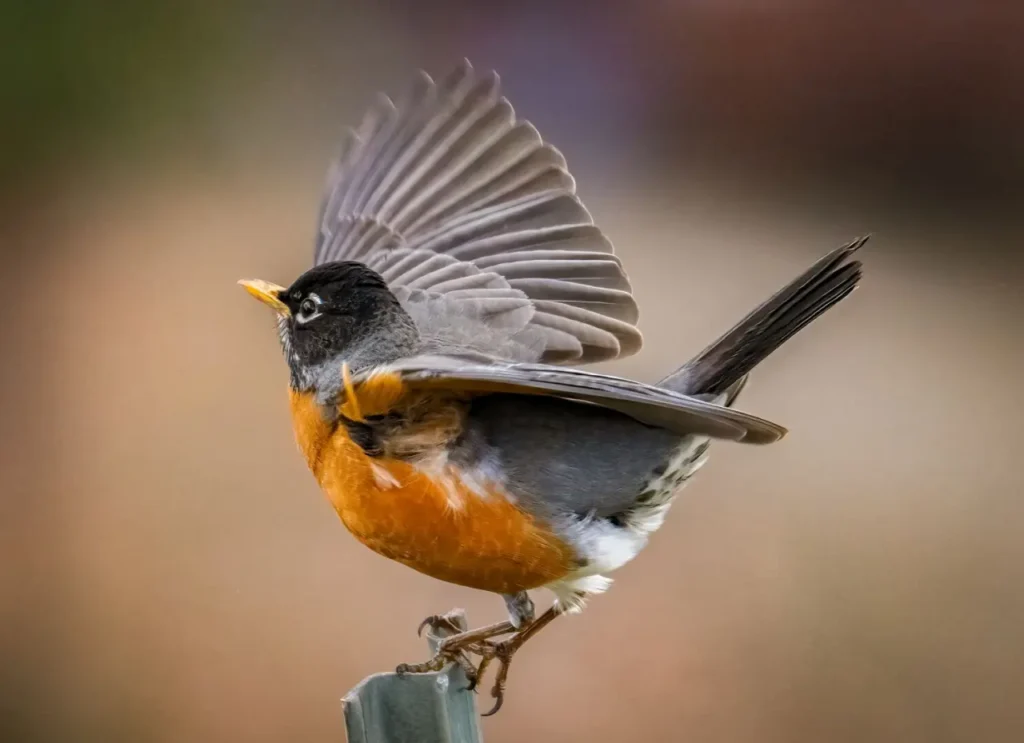
With a moderate size averaging between 9 to 11 inches in length, the American Robin assumes a prevalent and approachable role within backyards, gardens, and urban environments.
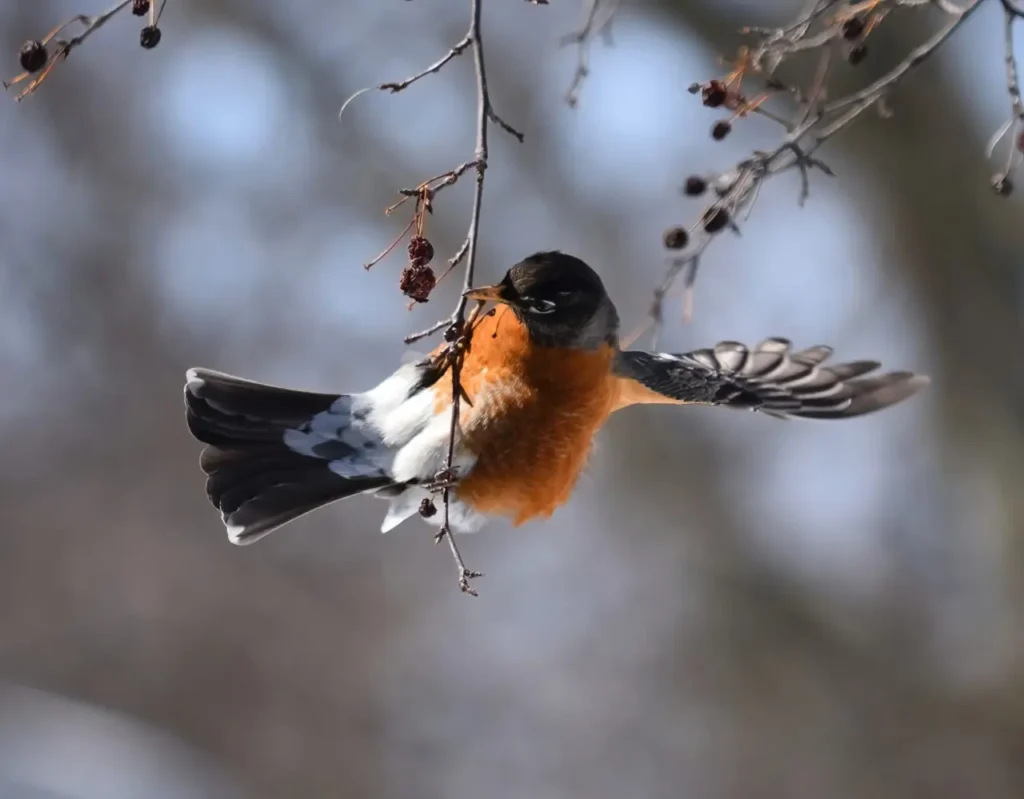
The American Robin garners admiration not merely for its appearance but also for its versatile behaviors. As an omnivorous creature, it boasts a diverse diet encompassing insects, earthworms, succulent fruits, and luscious berries. Employing tactics like tilting its head to listen for hidden prey beneath the earth, the robin’s resourcefulness in foraging is a testament to its adaptive spirit.
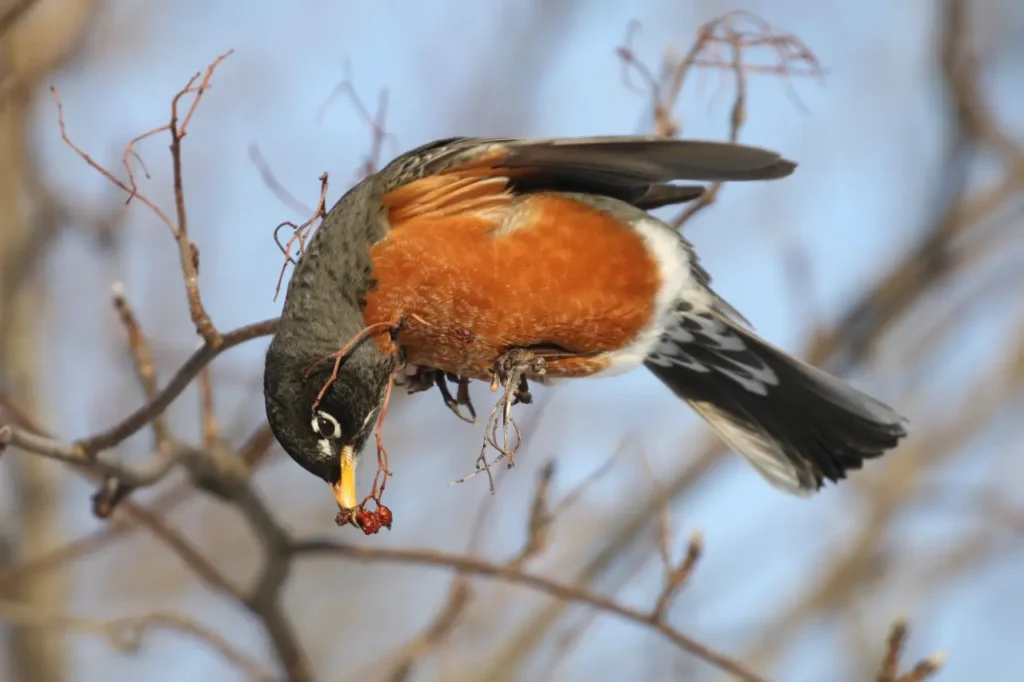
Renowned for its distinctive and melodious “cheer-up” song, the American Robin’s musical serenades frequently herald the advent of spring. Its lilting melodies fill the early morning air, contributing to the harmonious crescendo of nature’s reawakening after the hushed slumber of winter.
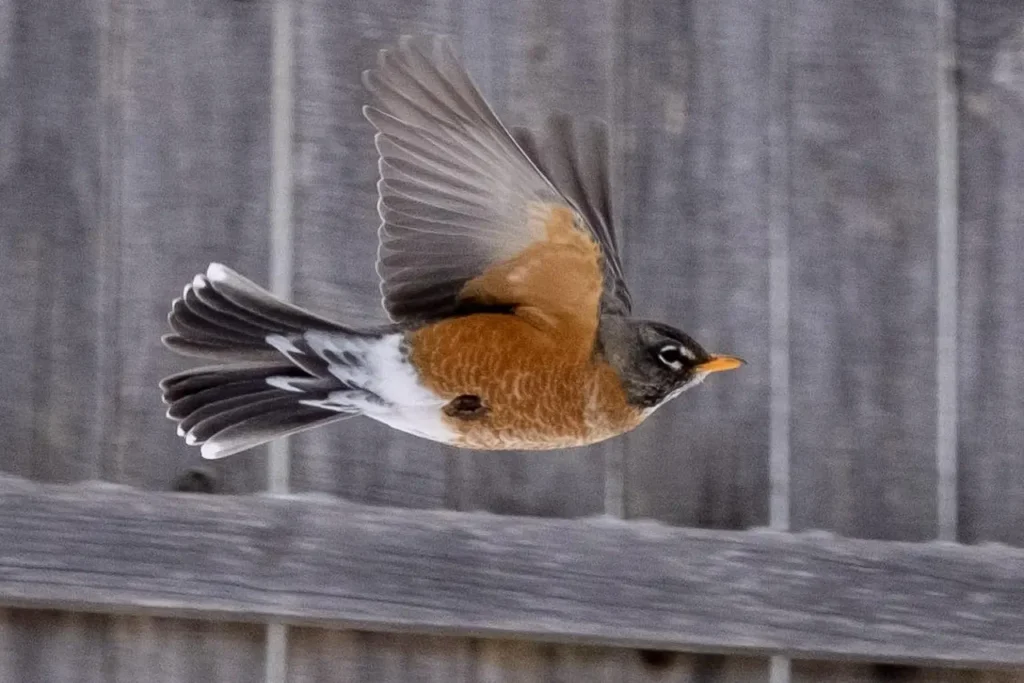
Deeply embedded in North American culture, the American Robin holds significant symbolic weight. Often embraced as a harbinger of spring, its return coincides harmoniously with winter’s thaw and the rekindling of life. A bearer of joy and optimism, its presence signifies the transition from frigid and barren days to the promise of sunlit months ahead.
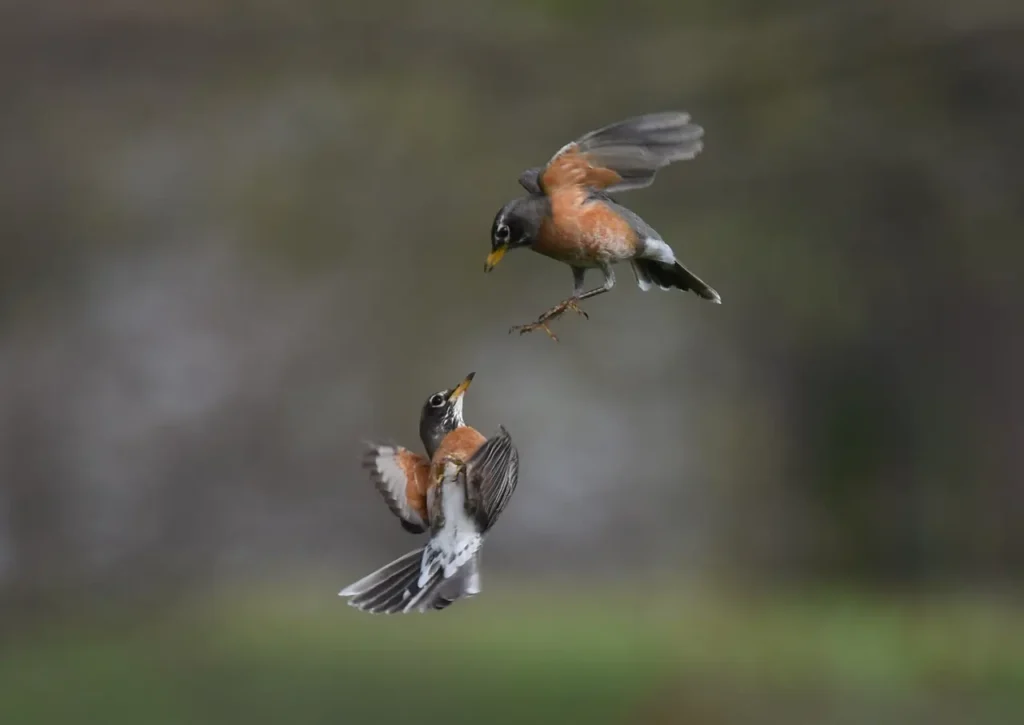
In certain Indigenous cultures, the robin is interwoven with themes of renewal, transformation, and the cyclical rhythm of existence. Its melodies and vivid plumage embody growth and metamorphosis.
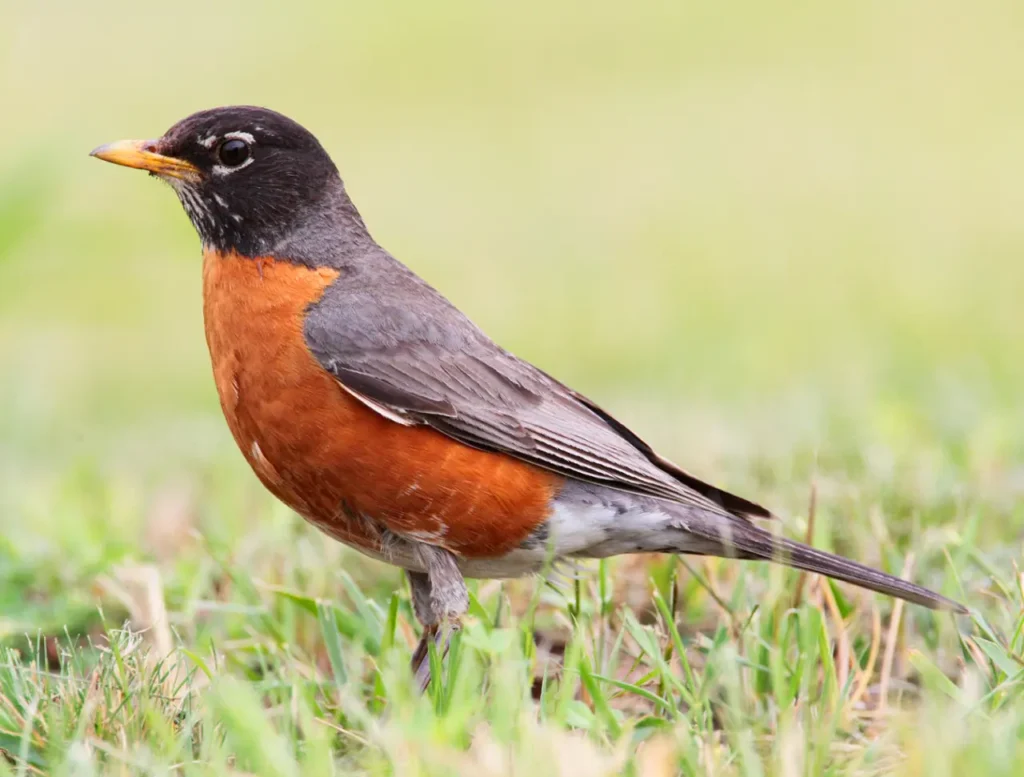
While not currently designated as a threatened species, the American Robin’s populations can be impacted by habitat loss and human activities. Pesticides and habitat degradation can impede the availability of insects and berries that constitute a significant portion of its diet.
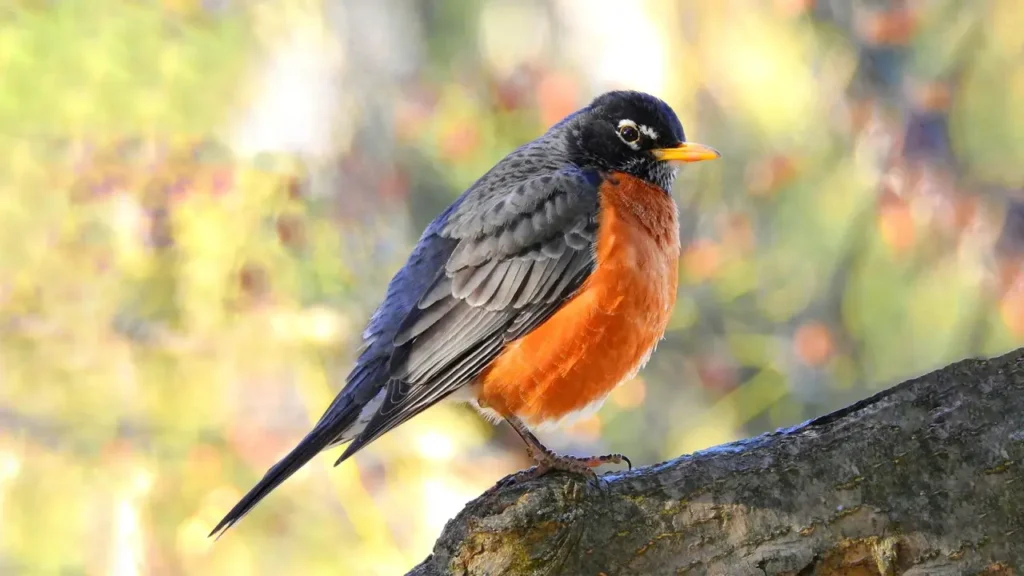
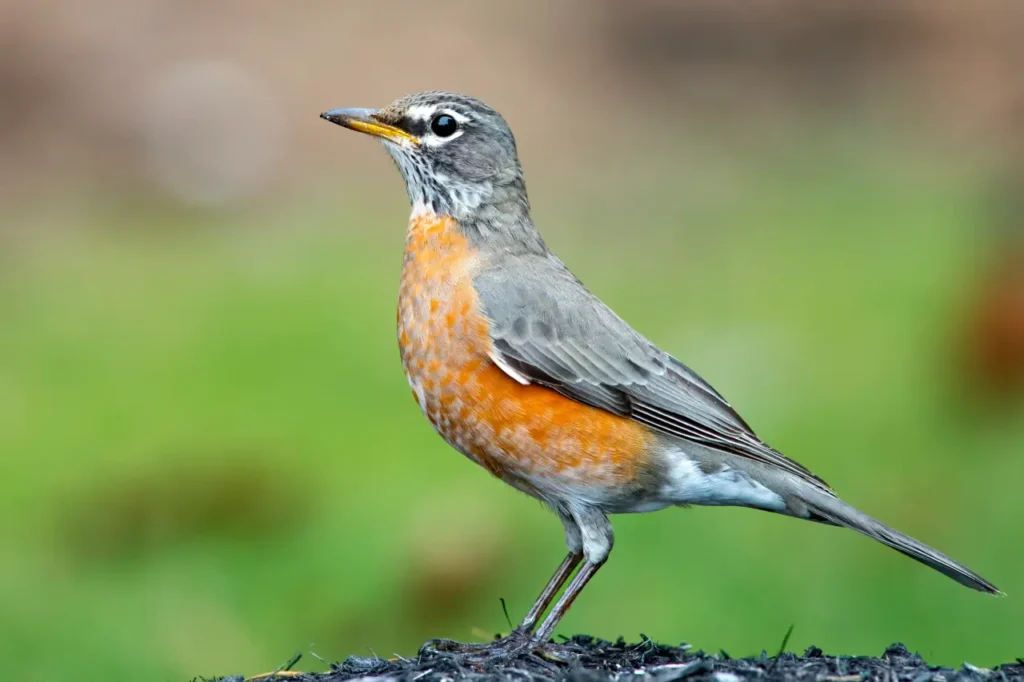
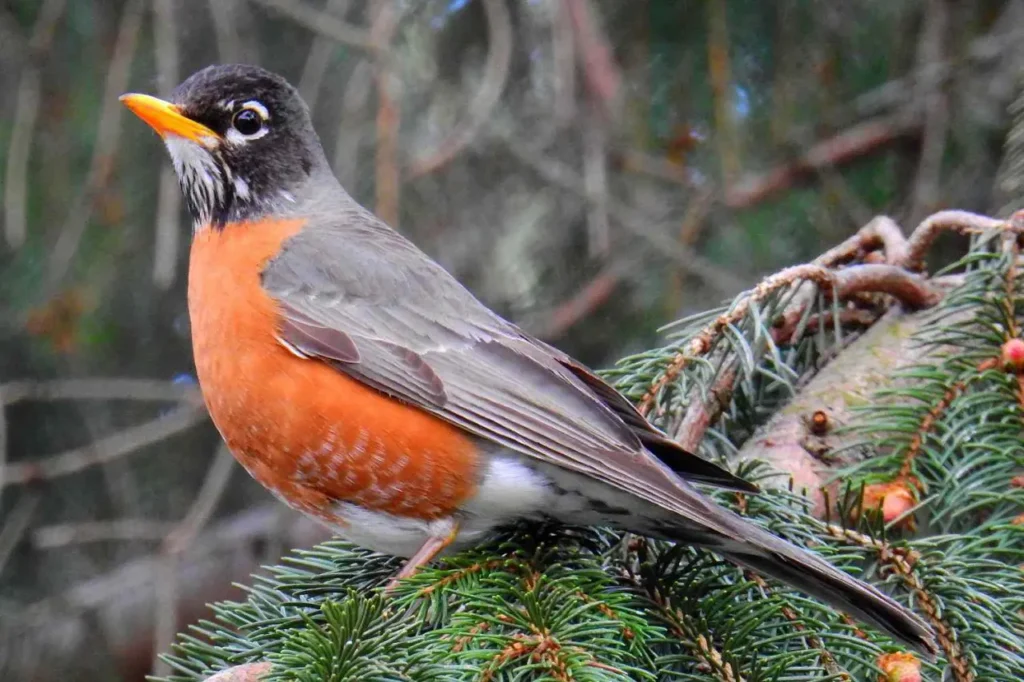
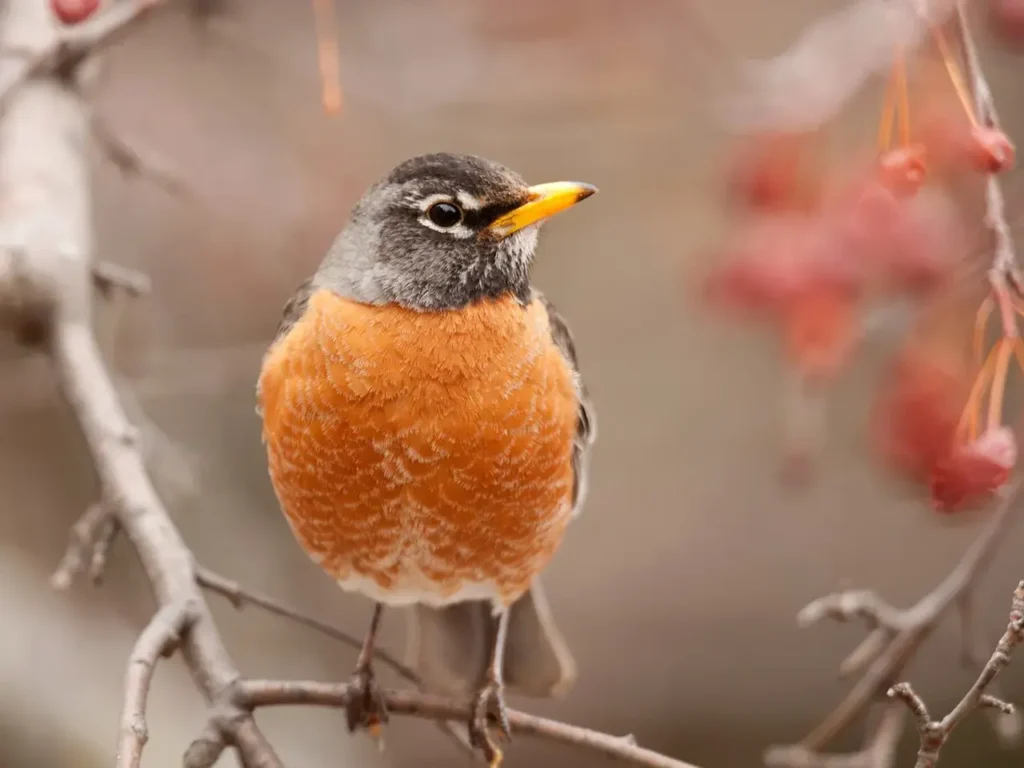
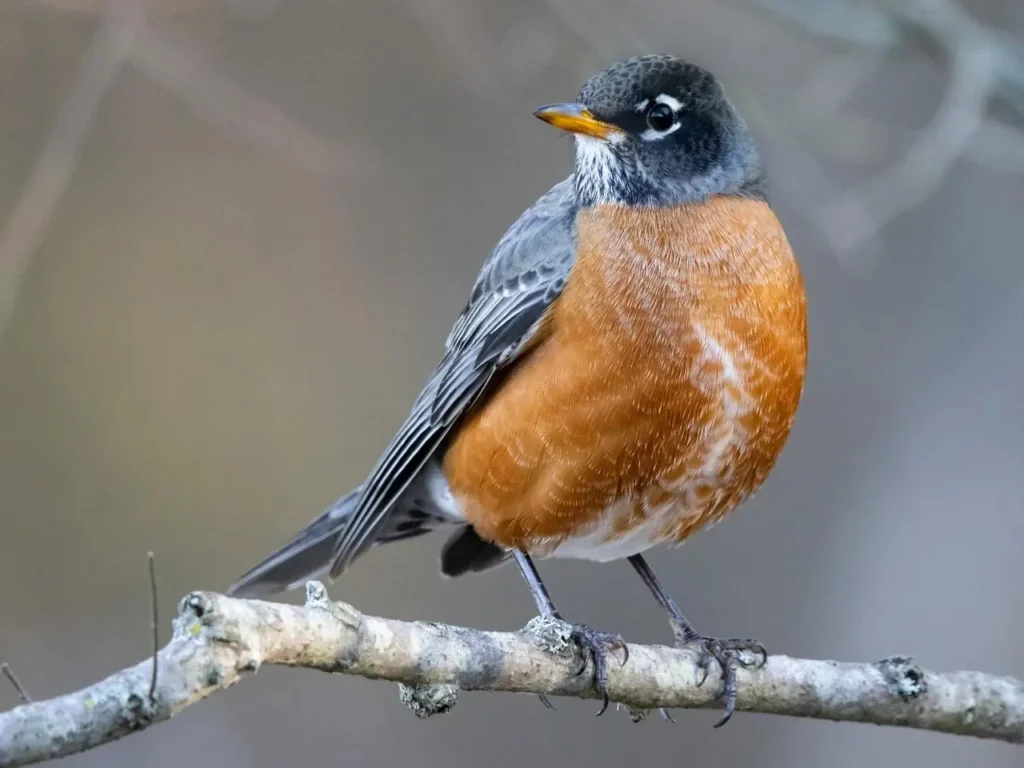
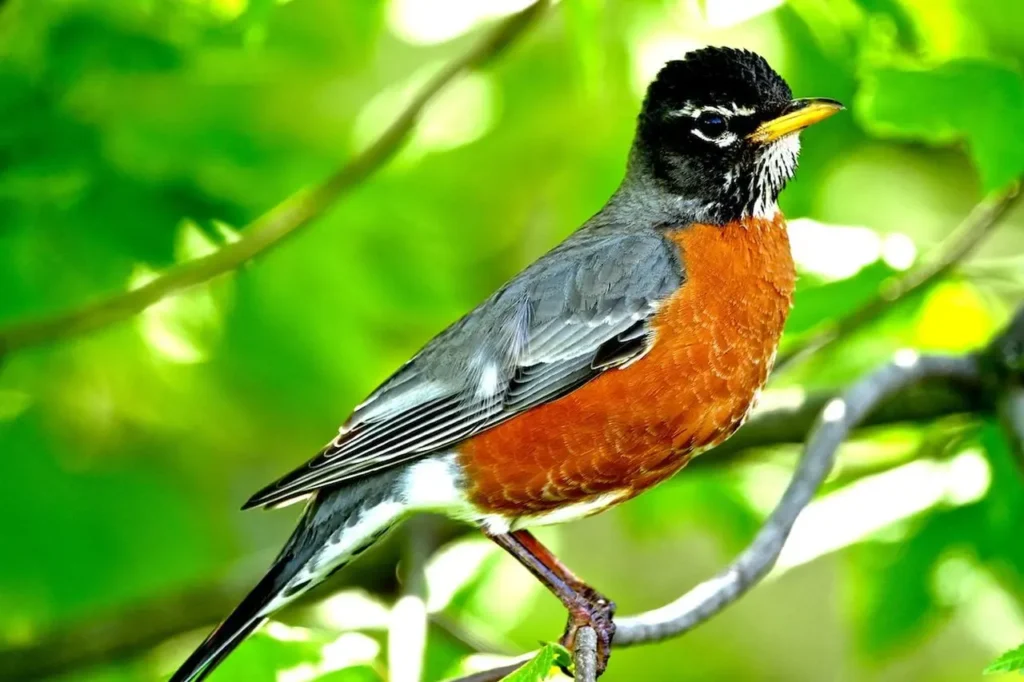
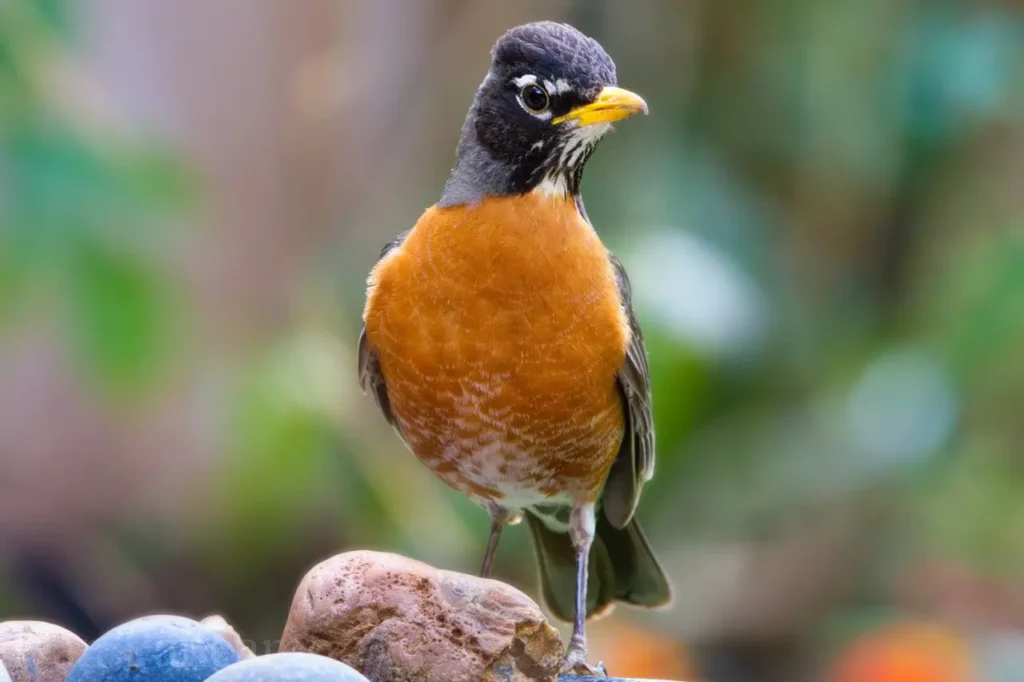
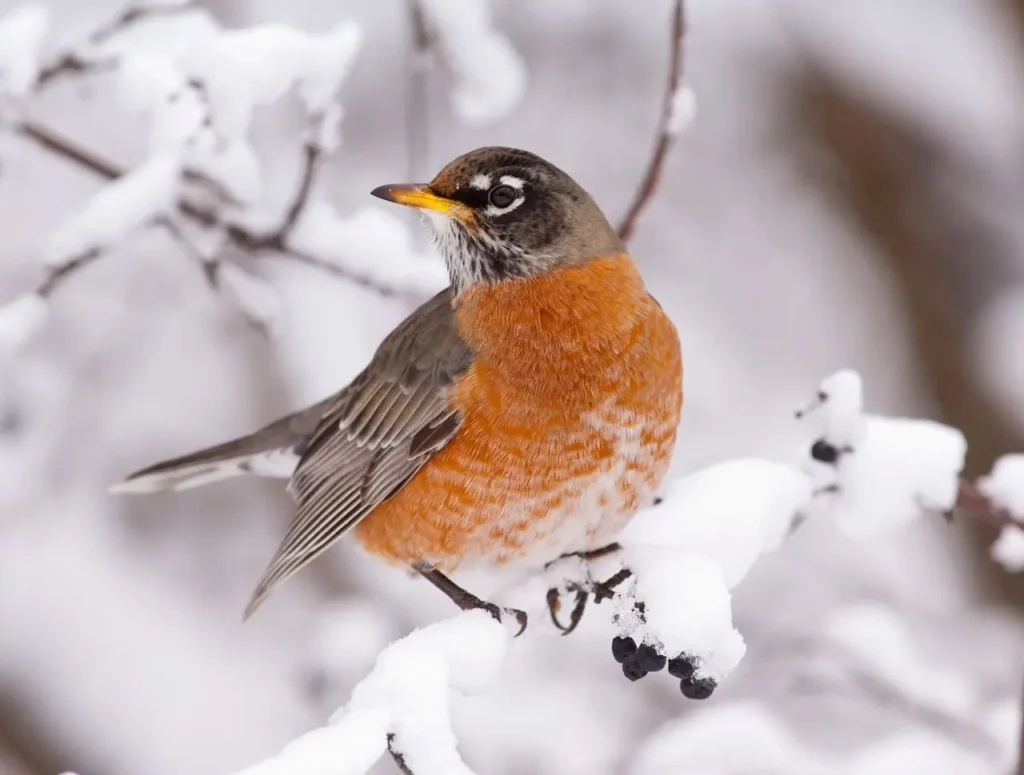
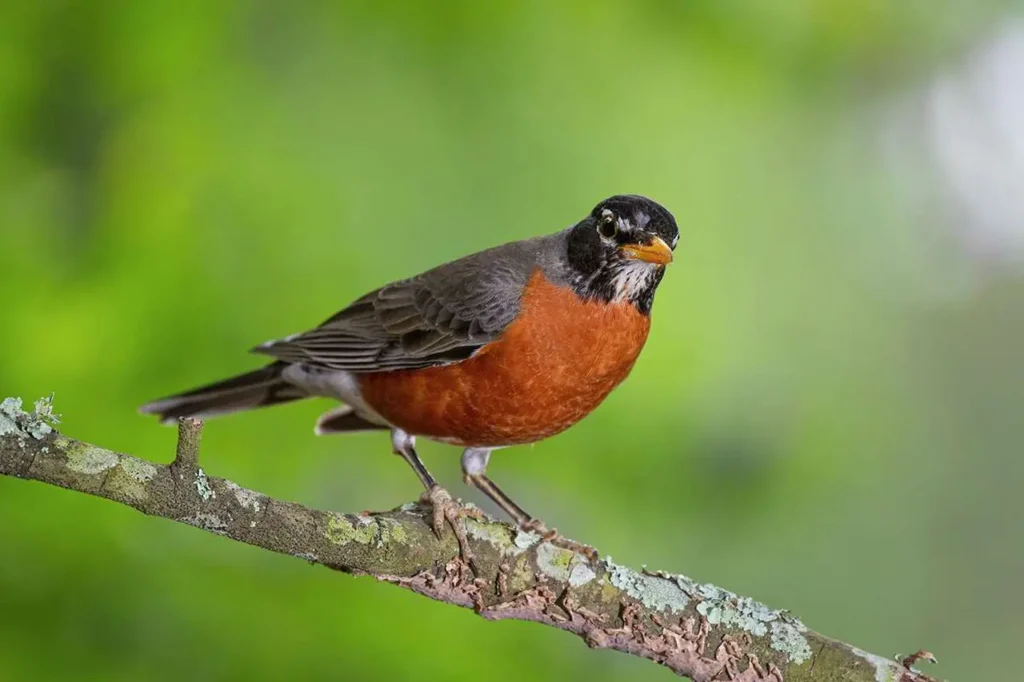
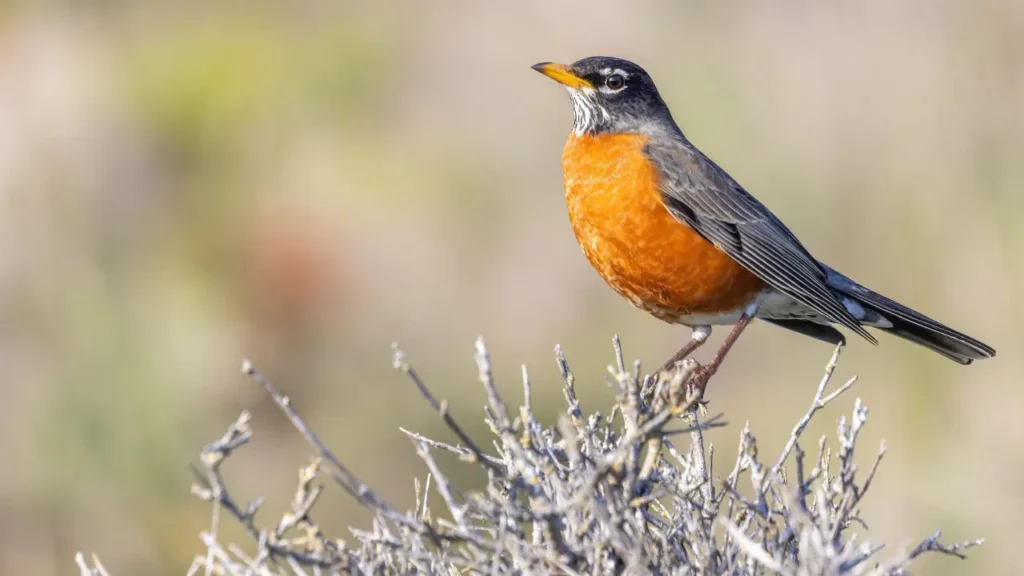
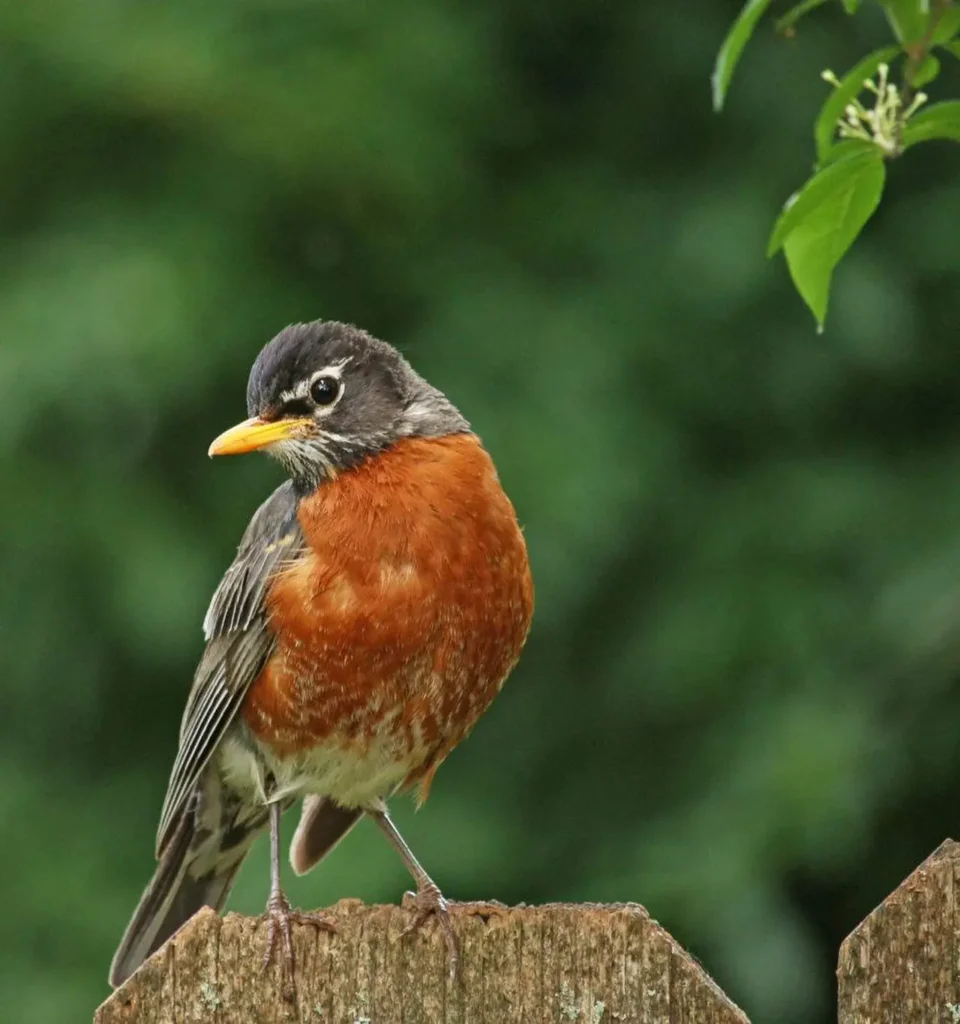
The American Robin, with its jubilant song and vivid presence, stands as an adored and emblematic bird that heralds the resurgence of spring. Its adeptness in adapting to diverse environments, adept foraging practices, and the uplifting strains of its calls render it a genuine emissary of seasonal change. Through valuing and preserving the habitats that nurture the American Robin, we ensure that its harmonious melodies persist as a symbol of optimism, exultation, and the enduring cycle of nature’s magnificence.
